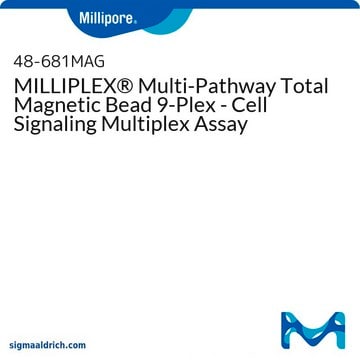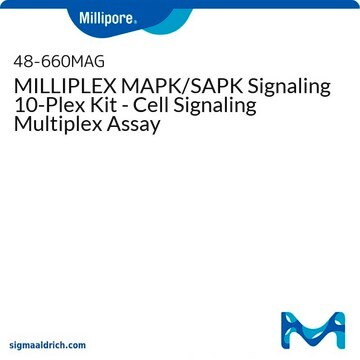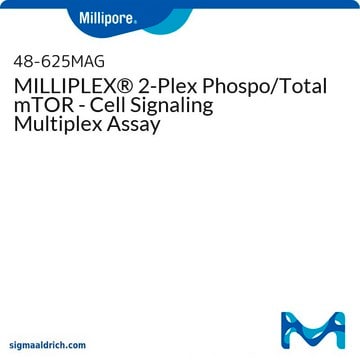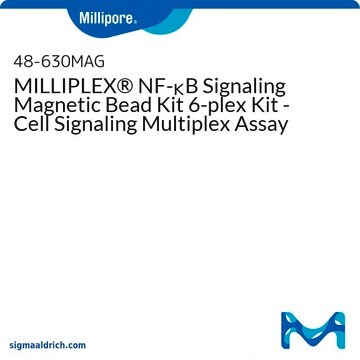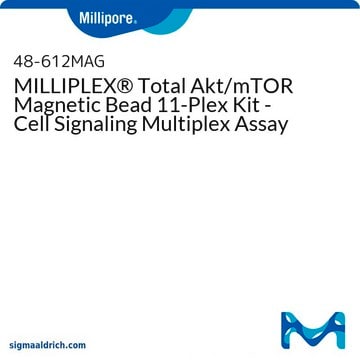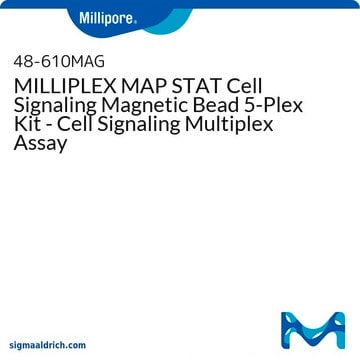The use of the Amplification Buffer is proprietary. Its primary purpose is to enhance the signal of phosphorylated proteins.
48-680MAG
MILLIPLEX MAP Multi-Pathway Magnetic Bead 9-Plex - Cell Signaling Multiplex Assay
Synonym(s):
ERK Cell Signaling Assay, Luminex® Cell Signaling Assay, Millipore Cell Signaling Assay
About This Item
Recommended Products
species reactivity
human
Quality Level
manufacturer/tradename
Milliplex®
technique(s)
multiplexing: suitable
detection method
fluorometric (Luminex xMAP)
storage temp.
2-8°C
General description
Specificity
Application
Cell Signaling
Oncology
Storage and Stability
Legal Information
Disclaimer
Signal Word
Danger
Hazard Statements
Precautionary Statements
Hazard Classifications
Acute Tox. 4 Oral - Aquatic Acute 1 - Aquatic Chronic 2 - Eye Dam. 1 - Skin Irrit. 2
Storage Class Code
10 - Combustible liquids
Certificates of Analysis (COA)
Search for Certificates of Analysis (COA) by entering the products Lot/Batch Number. Lot and Batch Numbers can be found on a product’s label following the words ‘Lot’ or ‘Batch’.
Already Own This Product?
Find documentation for the products that you have recently purchased in the Document Library.
-
Can you explain what the Amplification Buffer is in Cell Signaling Panels?
1 answer-
Helpful?
-
-
Is there a protocol available for running the 96-well Milliplex kits in a 384-well format?
1 answer-
We do not provide a recommended protocol for 384-well conversion. However, the Custom Assay Team (CADI) offers this as a service.
Helpful?
-
-
Are the Milliplex Cell Signaling panels qualitative? If so, what settings are used in xPonent for analysis? Can the data be normalized in Belysa?
1 answer-
The Cell Signaling kits are qualitative, and the xPonent Analysis method is not applicable. Belysa does not offer a qualitative option.
Helpful?
-
Active Filters
Our team of scientists has experience in all areas of research including Life Science, Material Science, Chemical Synthesis, Chromatography, Analytical and many others.
Contact Technical Service